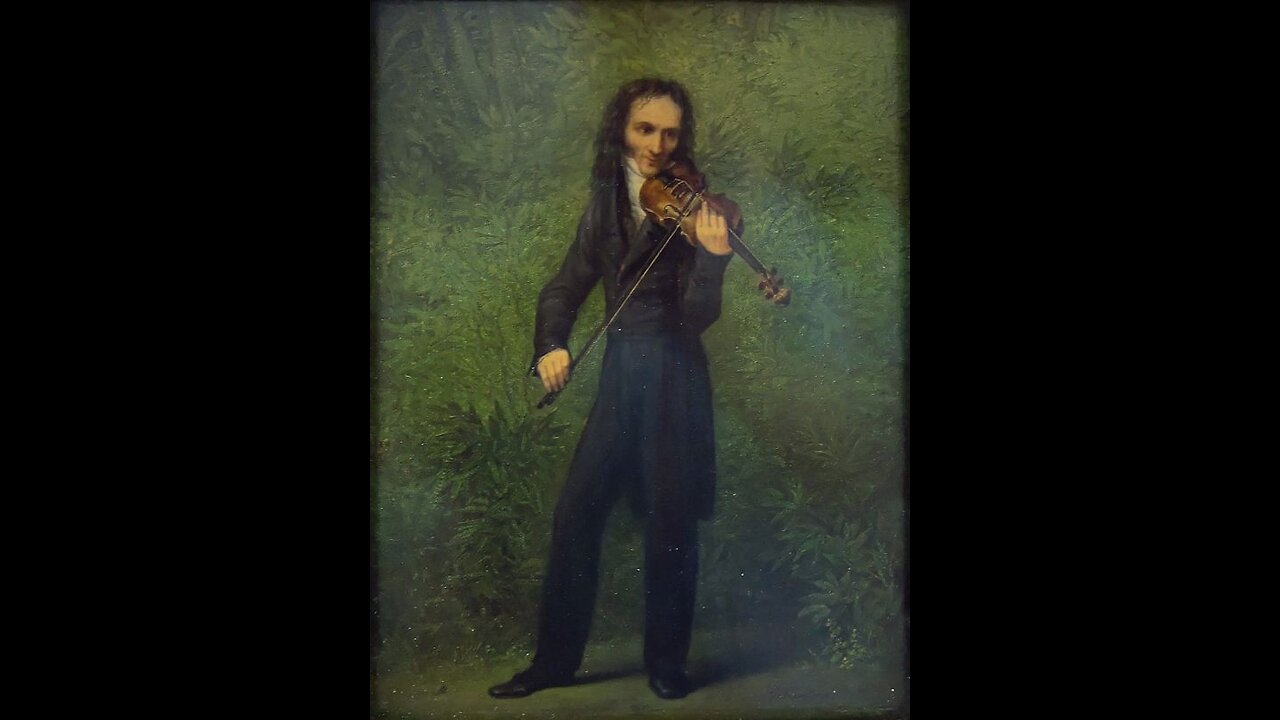Premium Only Content

"Zanoni", Book 1, by Edward Bulwer-Lytton
Book 1: The Musician
Due Fontane
Chi di diverso effeto hanno liquore!
"Ariosto, Orland. Fur." Canto 1.7.
----
0:00:00 Chapter I
0:23:17 Chapter II
0:34:52 Chapter III
0:47:05 Chapter IV
1:01:22 Chapter V
1:09:44 Chapter VI
1:21:13 Chapter VII
1:32:20 Chapter VIII
1:41:12 Chapter IX
1:55:30 Chapter X
----
The pictures used are:
Chapter 1: a paining of The violinist Niccolò Paganini by Georg Friedrich Kersting. Gaetano Pisani is a fictional character, but Niccolò Paganini seems to have about the right look to serve as a stand-in. Paganini is early 19th century instead of late, but close enough.
Chapter 2: Teatro San Carlo - View of stage from Royal Box by Viva-Verdi, used here under the Creative Commons Attribution-ShareAlike 3.0 Unported license (https://creativecommons.org/licenses/by-sa/3.0/deed.en).
Chapter 3: Napoli, the Piazza Vittoria e Riviera di Chiaia
Chapter 4: "The Poet" by Giuseppe Bonito. It was painted in 1742, so a few decades too early for our purposes, but it was irritatingly difficult to find a picture for this chapter at all. Meant to represent Count Cetoxa and his associates.
Chapter 5: "Two old men disputing" by Rembrandt (1628). In this case, Zanoni and his associate.
Chapter 6: "Un petit souper, a la Parisienne; - or - a family of sans-culotts refreshing, after the fatigues of the day" by James Gillray, published by Hannah Humphrey, hand-coloured etching, published 20 September 1792
Chapter 7: Théodore Géricault on His Deathbed (1824) by Charles Emile Callande de Champmartin. Sure, the old man in this chapter didn't actually die, but he almost did, and his would-be assassin mistook him for dead, so...
Chapter 8: "Conversation Piece: Three Men in Eighteenth-Century Costume" (1890) by Carl Wilhelm Anton Seiler, at the Victoria and Albert Museum in London.
Chapter 9: "Death of a musician" (1859) by Octave Tassaert
Chapter 10: the Angel of Grief by William Wetmore Story, which is actually from a cemetary in Rome for Protestants, so not the best fit for a Neapolitan Roman Catholic, but I still feel like it is a fitting image to capture the mood of this chapter.
To follow along: https://www.gutenberg.org/files/2664/2664-h/2664-h.htm#link2HCH0001
-
 8:00:00
8:00:00
SpartakusLIVE
11 hours agoDuos w/ Oakboi || The Ultimate WZ Taterfarm
42K1 -
 28:36
28:36
SB Mowing
2 days agoShe Couldn’t AFFORD to Keep It Clean Anymore, So I Stepped In
22.8K14 -
 7:54:04
7:54:04
MyronGainesX
20 hours ago $32.93 earnedOKC Bombing 30 Years Later, Vitaly And Somali Trouble, Durk Case Dissmissal, And MORE!
143K29 -
 1:26:34
1:26:34
Iggy Azalea
7 hours ago $10.48 earnedGambling on my casino cause and you know you love it
57.7K26 -
 29:25
29:25
Forrest Galante
8 hours agoPrivate Tour of Billionaire's Secret Animal Sanctuary in India
43.6K6 -
 2:37:29
2:37:29
vivafrei
20 hours agoEp. 260: SCOTUS Blocks Trump Deportation? Letitia James Criminal Referral! RFK Jr. & Autism & MORE!
144K190 -
 7:30:34
7:30:34
iCheapshot
12 hours ago $3.20 earnedSunday Funday! |Happy Easter! | Happy 420 #BlazeIt
32.7K2 -
 2:25:04
2:25:04
TheSaltyCracker
10 hours agoHappy Easter ReeEEEe Stream 04-20-25
165K441 -
 2:25:28
2:25:28
Tundra Tactical
10 hours ago $6.38 earned$3200 ZEV HEARTBREAKER Contest!!!
54.6K3 -
 9:09:39
9:09:39
Delnorin Games
13 hours ago🔴 Live - Call of Duty
28.1K